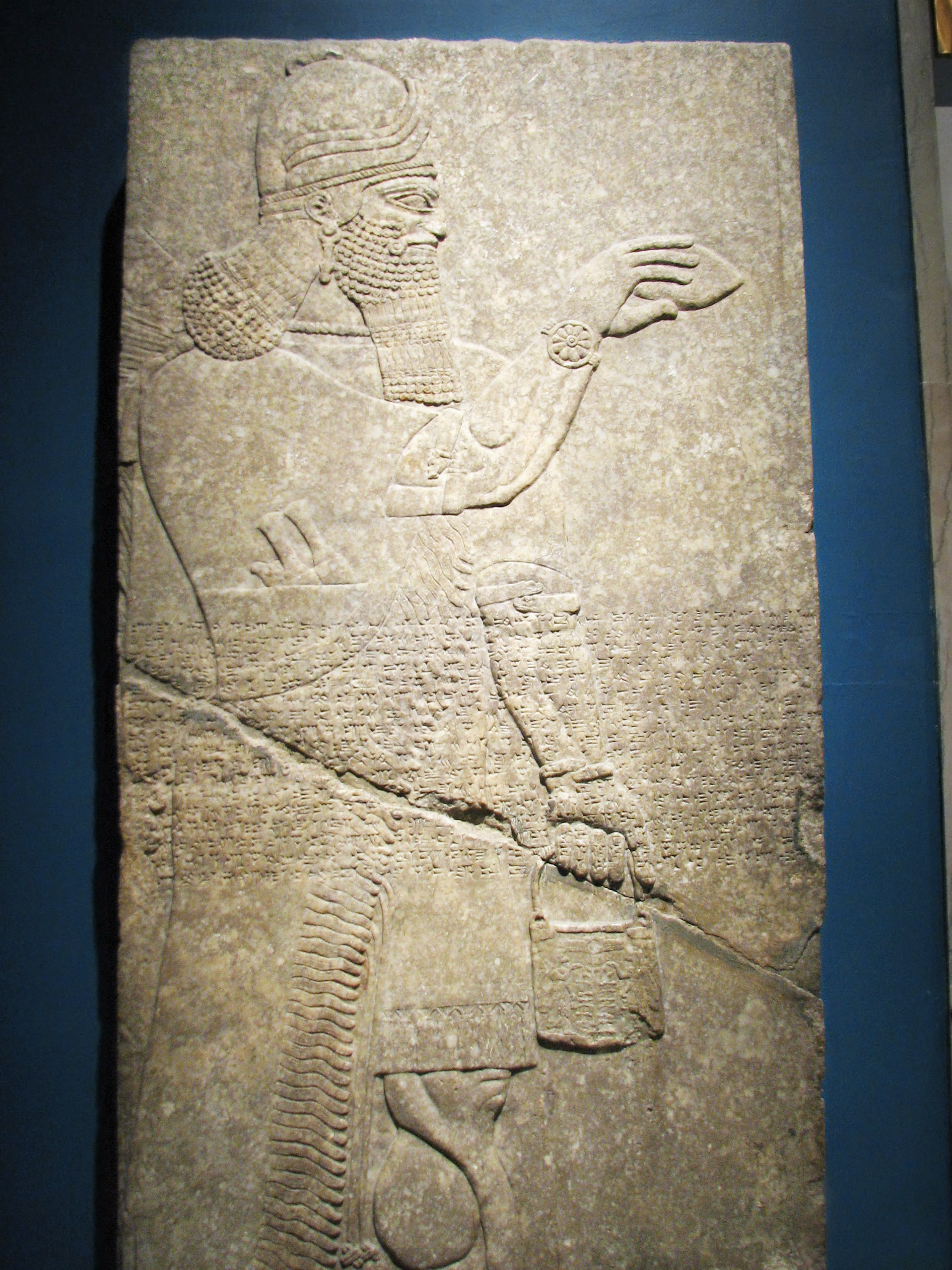
Nimrud, Assyria (modern day Iraq)
Neo-Assyrian Period, ca. 883-859 B.C.E.
Alabaster
Purchased with funds given by Hagop Kevorkian and the Kevorkian Foundation
Brooklyn Museum # 55.145
Photo © Joan Ann Lansberry
|
From Museum website "Each genie depicted in the reliefs exhibited here carries two knives tucked in his garment and in some cases a whetstone for sharpening the blades as well. Knives of this type are known to have been used from as early as the twelfth century b.c. Their hilts were often inlaid with bone, ivory, bronze, or precious metal, and their scabbards were decorated with the heads of birds. The whetstones were also decorated with an animal head, often of a horse or a bull."
From info card |


